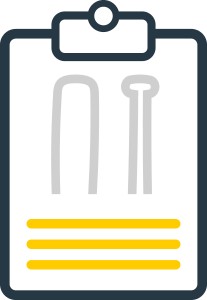At JustBats, we offer a wide variety of wood baseball bats. And, as wood baseball bat users know, there are a number of wood types: maple, ash, bamboo, birch, and even composite wood. However, wood bats have many more attributes that impact their performance. These attributes include swing weights, taper lengths, knob shape, and even cupping of the barrel. Today, our Bat Experts are focusing specifically on the cupping (or lack thereof) on the end of wood baseball bats. The terms "cupped" and "uncupped" refer to the end of the bat barrel. Here's the difference between the two:
Cupped Wood Bats
A cupped bat has a small concave indentation or "cup" at the end of the barrel. This cupping removes some of the excess weight from the end of the bat, redistributing it more toward the handle and barrel's sweet spot. The cupping process typically involves drilling or hollowing out the end of the bat barrel. Cupped bats are commonly used by players who want to improve bat speed and balance without sacrificing barrel size or overall weight.
Uncupped Wood Bats
An uncupped bat, as the name suggests, does not have a cup or hollowed-out end. The barrel maintains a solid, continuous shape from the handle to the end. Uncupped bats are usually slightly heavier at the end compared to cupped bats. They may appeal to players who prefer a more balanced feel throughout the bat or desire extra mass at the barrel's end to generate power.
Both cupped and uncupped bats have their advantages and are used by players based on personal preference and playing style. Cupping reduces the bat's weight at the end, potentially allowing for quicker swings, while uncupped bats provide different weight distribution and potentially more power through the swing.
The basic advantages of having a cupped end on a wooden baseball bat are:
- Improved overall balance
- Increased exit velocity
- Allows for a harder piece of wood during construction
- Potential for increased swing speed
Now, let's dig deeper and explain exactly how these advantages happen. As previously mentioned, one of the main advantages of having a cupped end is that it will make your bat more balanced in comparison to a wood bat that is not cupped on the end. By cupping out the end, unnecessary weight is removed toward the end of the barrel and allows hitters to have more control of their swings. Quicker, more controlled swing speed translates directly into increased exit velocity and further ball flight.
A common misconception is that cupping a wood baseball bat will make the bat weaker or more susceptible to cracking or splintering. But, that's not true. The main advantage of having a cupped end on a wood baseball bat is that it allows a manufacturer, such as Louisville Slugger or Marucci, to use a more dense piece of wood during construction.
Why is a dense piece of wood an advantage for bats?
First of all, having a dense piece of wood will result in harder wood and harder wood will last significantly longer and have less of a chance of breaking. Not only is durability enhanced, but a harder piece of wood is much higher performing. If you want a wood bat with a ton of pop, keep an eye out for a cupped end! And one cupped wood bat you should definitely keep in mind when shopping for a new wood bat is the Rawlings VELO Maple Wood Baseball Bat (PA110 Adult). This bat has 20+ customer reviews on our site and has garnered a 4-out-of-5 star rating!
Are you looking to buy a new wood baseball bat? Or, do you have any baseball bat or softball bat questions? Give our Bat Experts a call at (866) 321-2287. They are available and are here for you from click to hit!





